The following is a summary of the associations relational database tables can have. It goes through each of them and provides examples of them using SQL Server. The author does not cover the Many-to-One relationship, but in a nutshell that’s One-to-Many with the table that is referenced on the opposite side.
https://www.tutorialsteacher.com/sqlserver/tables-relations
Tables Relations in SQL Server: One-to-One, One-to-Many, Many-to-Many
It is important to understand and design relationships among tables in a relational database like SQL Server. In a relational database, each table is connected to another table using the Primary-Foreign Key constraints.
Table relationships in SQL Server database are of three types:
One-to-One Relation
In One-to-One relationship, one record of the first table will be linked to zero or one record of another table. For example, each employee in the Employee table will have a corresponding row in EmployeeDetails table that stores the current passport details for that particular employee. So, each employee will have zero or one record in the EmployeeDetails table. This is called zero or one-to-one relationship.
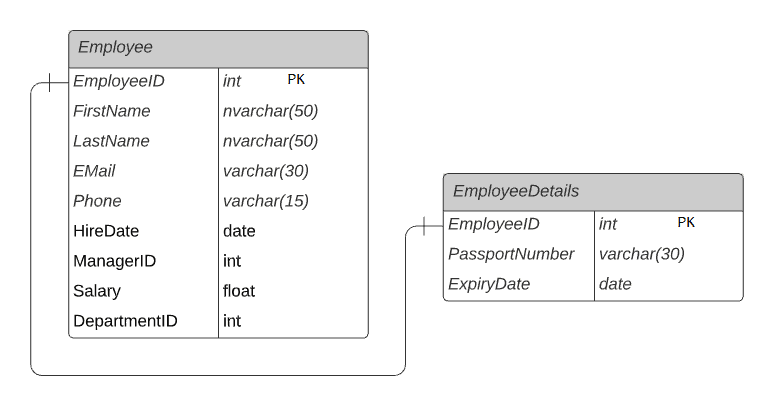
One-to-One Relationships
Above, EmployeeID column is the primary key as well as foreign key column in the EmployeeDetails table that linked to EmployeeID of the Employee table. This forms zero or one-to-one relation.
The following query will display data from both the tables.
SELECT * FROM Employee
SELECT * FROM EmployeeDetails
The following is the result of the above queries that demonstrate how each employee has none or just one corresponding record in EmployeeDetails table.

Records in One-to-One Relationships Tables
One-to-Many Relation
One-to-Many is the most commonly used relationship among tables. A single record from one table can be linked to zero or more rows in another table.
Let’s take an example of the Employee and Address table in the HR database. The Employee table stores employee records where EmployeeID is the primary key. The Address table holds the addresses of employees where AddressID is a primary key and EmployeeID is a foreign key. Each employee will have one record in the Employee table. Each employee can have many addresses such as Home address, Office Address, Permanent address, etc.
The Employee and Address tables are linked by the key column EmployeeID. It is a foreign key in the Address table linking to the primary key EmployeeID in the Employee table. Thus, one record of the Employee table can point to multiple records in the Address table. This is a One-to-Many relationship.
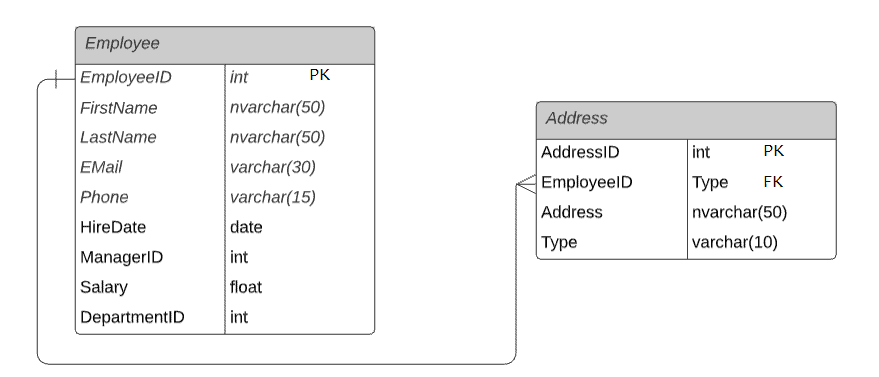
One-to-Many Relationships
The following query will display data from both the tables.
SELECT * FROM Employee
SELECT * FROM Address
The following is the result of the above queries to demonstrate how the data is related in one-to-many relationship.
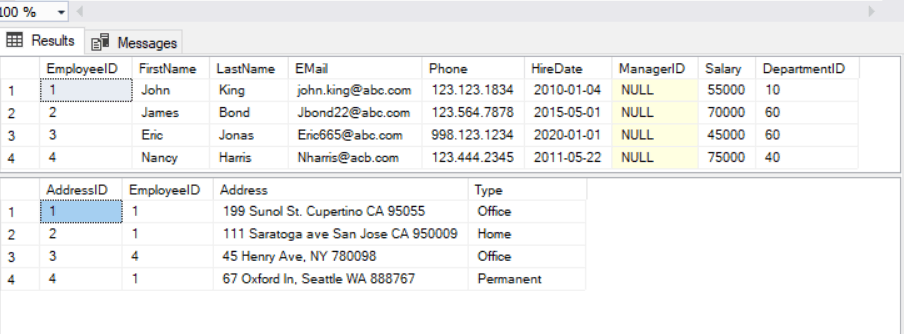
Records in One-to-Many Relationships Tables
In the above data, each record in the Employee table associated with zero or more records in the Address table, e.g. James Bond has zero address, John King has three addresses.
Many-to-Many Relation
Many-to-Many relationship lets you relate each row in one table to many rows in another table and vice versa. As an example, an employee in the Employee table can have many skills from the EmployeeSkill table and also, one skill can be associated with one or more employees.
The following figure demonstrates many-to-many relation between Employee and SkillDescription table using the junction table EmployeeSkill.
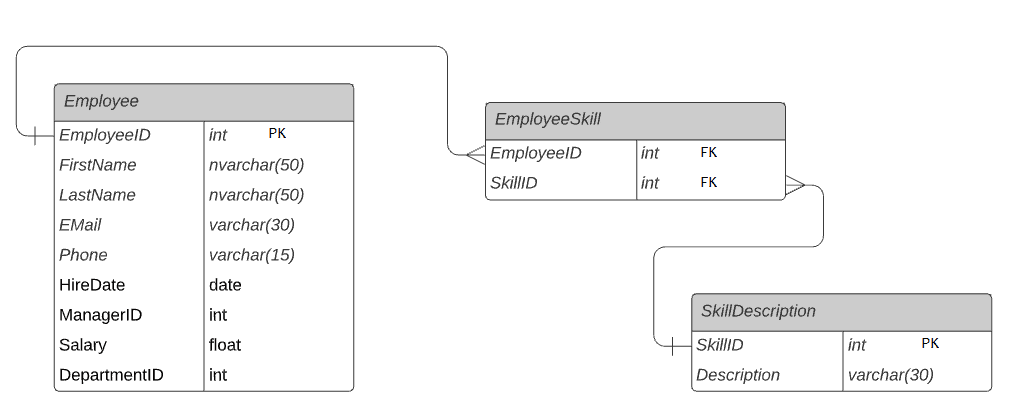
Many-to-Many Relationships
Every employee in the Employee table can have one or many skills. Similarly, a skill in the SkillDescription table can be linked to many employees. This makes a many-to-many relationship.
In the example above, the EmployeeSkill is the junction table that contains EmployeeID and SkillID foreign key columns to form many-to-many relation between the Employee and SkillDescription table. Individually, the Employee and EmployeeSkill have a one-to-many relation and the SkillDescription and EmployeeSkill tables have one-to-many relation. But, they form many-to-many relation by using a junction table EmployeeSkill.
The following query will display data from all the tables.
SELECT * FROM Employee
SELECT * FROM EmployeeSkill
SELECT * FROM SkillDescription
The following is the result of the above queries that demonstrate how the data is related in many-to-many relationship.
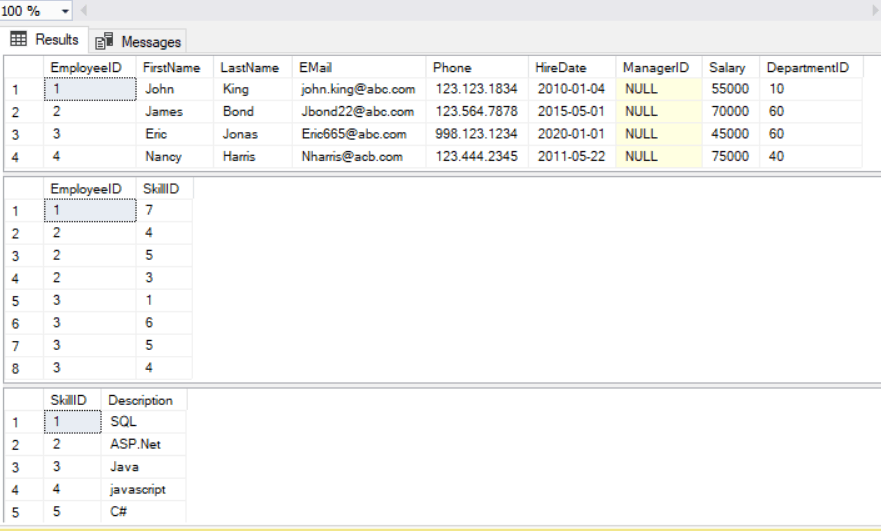
Records in Many-to-Many Relationships Tables